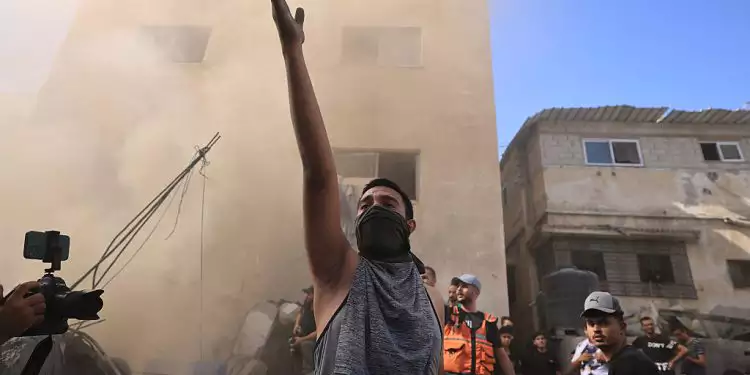Israel should consider agreeing to very limited humanitarian ceasefires, both in terms of time and location. In this arrangement, Israel will be able to monitor all aid entering the Gaza Strip and continue fighting in northern Gaza.
It is clear beyond any doubt that Israel cannot agree to a ceasefire. A ceasefire means a victory for Hamas, which will immediately begin planning its next terrorist attack. It means death for Israel, which won’t be able to restore basic security to its border residents, or even to those in the central region. It means that Israel’s deterrence will be weakened and reduced to zero.
Follow Israel Hayom on Facebook, Twitter, and Instagram
So far, the United States’ position has aligned with Israel’s, and even President Joe Biden has opposed a ceasefire. However, within the Democratic Party, there is growing pressure on the government to put an end to the Israeli military operations in the Gaza Strip. This pressure is also intensifying on campuses, in American cities, and among Arab American allies.
In an attempt to alleviate the pressure and facilitate a ceasefire, Secretary of State Antony Blinken visited Israel for the third time last week. He proposed a “humanitarian pauses,” meant to provide water and food to Palestinian citizens in the southern Gaza Strip, and perhaps even to advance negotiations for the possible release of the captives.
Blinken’s proposal was immediately rejected by the Israeli government, claiming that they could not agree to limited humanitarian ceasefires without the early release of the captives. Israel is aware that Hamas will exploit these ceasefires to reorganize and seize a significant portion of the aid being sent to Gaza. Based on past experience, it is reasonable to assume that terrorists will blend into the civilian population and escape southward with it. Most importantly, the Israeli public is not ready to give up its nearly sole bargaining chip against Hamas in the matter of the captives.
Common denominator
This situation puts Israel in a dilemma: On one hand, it is very justified resistance to very limited humanitarian ceasefires; on the other hand, there is a strategic need to maintain a united front with the United States. Very soon, we will need American vetoes against anti-Israel decisions in the UN Security Council. Additionally, Israel will soon need another supply of munitions from the United States. So far, President Biden has supported Israel, both in words and deeds, and now he may demand reciprocity from us. He can say, “Help me help you,” and rightly so.
Is there a way to square this circle? Israel should consider agreeing to very limited humanitarian ceasefires, both in terms of time and location. In this arrangement, Israel will be able to monitor all aid entering the Gaza Strip and continue fighting in northern Gaza. The glaring disadvantage of any humanitarian aid is the inherent inability to control its distribution within the Gaza Strip, and it is reasonable to assume that part of it will end up with Hamas.
Agreeing to a limited ceasefire will not be easy for the Israeli public, which has not received any humanitarian aid for its captives in 30 days. However, there is strategic and security importance in preserving the unambiguous support of President Biden. Hamas doesn’t deserve a ceasefire, not even for a few minutes. Nevertheless, to maintain US support, which currently backs our security mission, we must seriously consider the demands of the Americans and work to find common ground for agreement.








Israel should widely release the 45 minutes or so of October 7 slaughter that apparently “scarred” some of the apparently reputable journalists who were privileged to watch it. Since then…. not much reporting. Israel needs to put it out, importantly with some recognizable journalists being willing to be on camera saying, “This IS what we saw for 45 minutes, it is not AI-created Israeli propaganda.” Preface it with trigger warnings – if people don’t want to watch the horror, they won’t. But many around the world WILL watch… and learn.